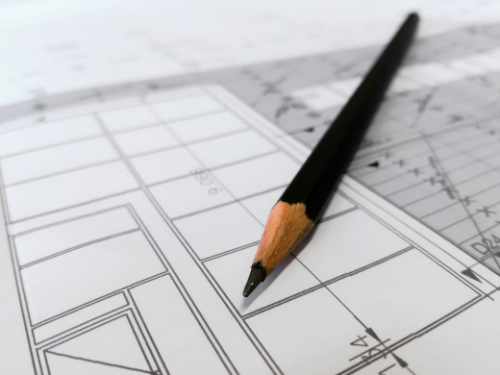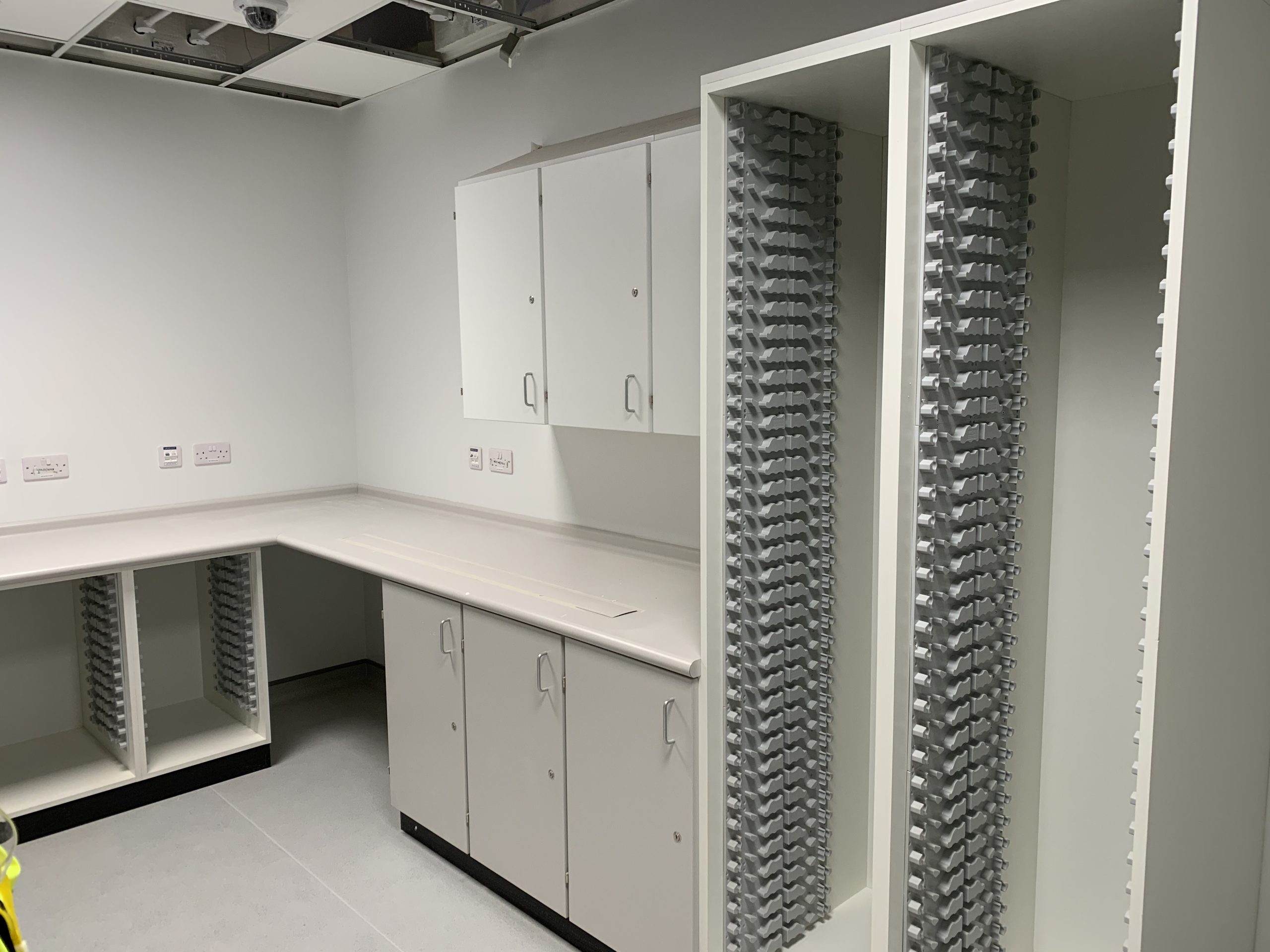Healthcare facilities present unique challenges for architects. Unlike other types of buildings, they demand a…

HTM71 or HTM63 – choosing the right fitted furniture for healthcare spaces
What are the real differences between HTM71 and HTM63, two key specification requirements for fitted furniture in healthcare environments? They may look similar, but understanding what each one offers, is crucial for architects and other key specifiers wanting to design functional, safe, and compliant spaces, writes Tony Huggins, managing director of David Bailey Furniture.
On face value, HTM71 can be simply described as the catch all term for the storage of consumables such as syringes, sharps and other day to day materials regularly used in hospital environments, while HTM63 applies to storage units for larger, more bulky items. However, the full explanation is more complex :
Defining HTM63
It would be easier to think of HTM63 as the bedrock of healthcare storage. It defines the essential requirements for fixed base units, cupboards, and shelving. These robust, durable units provide critical storage for medical equipment, supplies, and patient records.
HTM63 units are bolted to the wall, creating a stable and secure storage solution. They are designed to handle heavy medical equipment and materials and are manufactured using smooth surfaces with rounded corners to facilitate thorough disinfection. The units are available in a number of bespoke options to give certain levels of flexibility in terms of size, configuration, and materials.
So when should an architect choose the HTM63 storage option? The short answer is when a hospital needs to meet core storage needs in areas such as wards, clinics, and laboratories and particularly when stability and security are paramount for housing heavy equipment. HTM63 is also ideal for budget-conscious projects where flexibility is less important.
Defining HTM71
HTM71 introduces a modular approach to storage, utilising trays, containers and other types of holders that fit seamlessly into HTM71 units. This creates a dynamic and adaptable storage system that can evolve with changing needs.
The key features of HTM71 are its modular and mobile abilities. Trays and holders offer flexibility and ease of rearrangement. This in turn maximises storage capacity by utilising vertical space.
Another advantage of incorporating HTM71 is improved workflow, providing easy accessibility of equipment and supplies to enhance efficiency. The system also delivers good infection control, with trays and other holders which are easily removable for thorough cleaning and disinfection.
When to choose HTM71? This is the system of choice for dynamic environments such as treatment rooms and operating theatres when equipment needs to be readily accessible from multiple points. HTM71 should also be specified for projects requiring high levels of space utilisation and adaptability.
A question of choice
With space at a premium in most hospitals and healthcare centres, it is essential that specifiers make the right choice. If your design for example includes a sink then HTM71 is the wrong choice as it will not fit and essential storage space will need to be compromised or adapted.
So which specification should an architect choose? Well, the answer, like most things in life, is “it depends.” Several factors have to be considered such as space constraints and layout – especially if space is at a premium and the layout requires a dynamic storage solution,
You need to consider how will staff interact with the storage system. Do they need frequent access to equipment? Project budgets and timelines are also crucial. Does the budget allow for example, for the flexibility of HTM71? Is time available for customisation? Most importantly, architects also need to consider Infection control priorities.
We are David Bailey Furniture – just ask
If you are still not sure – just ask. We like to think that we are not just furniture suppliers – but trusted partners in navigating the intricate world of healthcare specifications. We offer a comprehensive range of HTM63 and HTM71 compliant products, from robust base units to innovative modular trays and containers.
We are here to provide expert guidance and help you choose the right fitted furniture solution based on your specific project requirements and HTM specifications. We offer bespoke design options to ensure your fitted furniture seamlessly integrates with your architectural vision.
Our team understands the intricacies of both HTM63 and HTM71, ensuring compliance and safety. We use high-quality materials and construction methods to guarantee long-lasting performance in demanding healthcare environments to ensure that your design can be delivered on time and within budget.
With David Bailey Furniture Systems as your partner, you can design safe, functional, and compliant healthcare spaces that support both patient care and staff efficiency. So, whether you are designing for a busy hospital or a small private clinic, together, we are ready to help you build a brighter future for healthcare.








